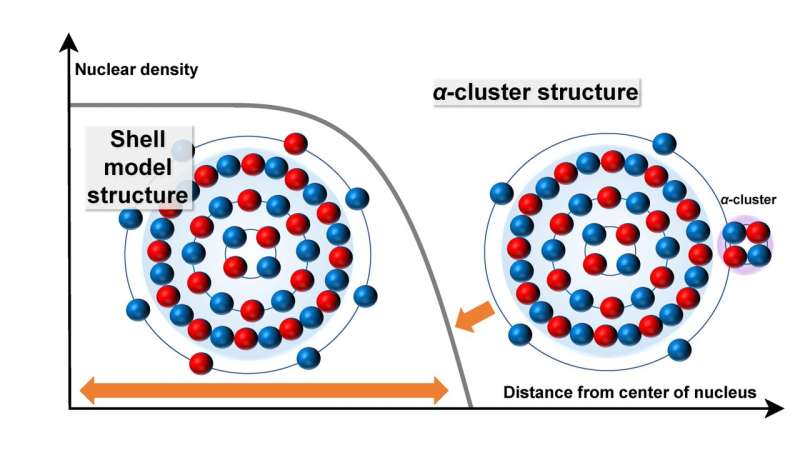This article has been reviewed according to Science X's editorial process and policies. Editors have highlighted the following attributes while ensuring the content's credibility:
fact-checked
peer-reviewed publication
trusted source
proofread
Results suggests titanium-48's nuclear structure changes when observed at varying distances

The world around us is made up of particles invisible to the naked eye, but physicists continue to gain insights into this mysterious realm. Findings published in Physical Review C by Osaka Metropolitan University researchers show that the nuclear structure of an atom likely changes depending on the distance the protons and neutrons are from the center of the nucleus.
OMU graduate student Maito Okada, Associate Professor Wataru Horiuchi, and Professor Naoyuki Itagaki from the Graduate School of Science compared calculations using theoretical models with existing experimental data to determine whether titanium-48, the most common isotope of titanium with 22 protons and 26 neutrons, has a shell model structure or an α-cluster (alpha cluster) structure.
While shell models are symmetric, α-cluster structures are thought to have an alpha particle at the outer region of the nucleus, making an asymmetrical configuration. An α-particle is the same as helium with two protons and two neutrons. In alpha decay, this particle is emitted; for example, titanium-48 becomes calcium-44 if such decay occurs.
The OMU team calculated the collision effect of high-energy accelerated protons and α-particles on titanium-48. This was based on a theory of nuclear reactions in which the impact of protons on a nucleus reflects the structure near the surface of the target nucleus, while the collision of α-particles on a nucleus reflects the structure of the outer regions.
The results suggest that titanium-48 changes from a shell model structure to an α-cluster structure depending on the distance from the center of the nucleus.
"These results upend the conventional understanding of nuclear structure and can be expected to provide clues to the α-decay process that occurs in heavy nuclei, which has not been solved for nearly 100 years," Professor Horiuchi said, referring to the Gamow theory on nuclear decay.
"In the future, we would like to extend the results obtained through this research to take on the challenge of solving issues related to heavier nuclei."
More information: M. Okada et al, Shell-cluster transition in 48Ti, Physical Review C (2024). DOI: 10.1103/PhysRevC.109.054324. On arXiv: arxiv.org/html/2403.01685v1
Journal information: Physical Review C , arXiv
Provided by Osaka Metropolitan University





















